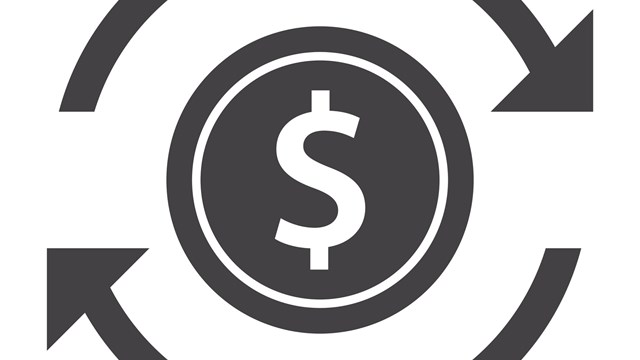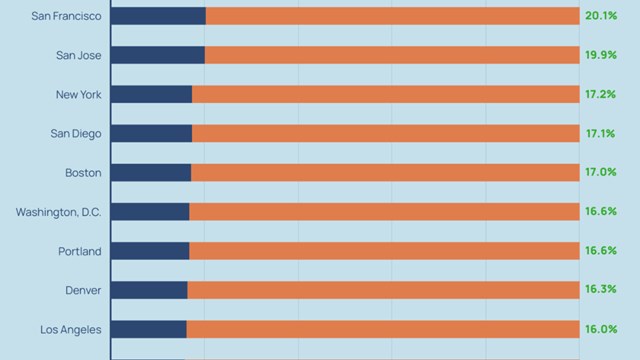Could your building use a facelift? Have you contemplated better-fitting windows, new carpet or an updated elevator, but the board's answer was always "There's not enough cash." From renovation and moving fees to renting out roof or basement space, resourceful co-ops and condos are finding ways to increase revenue. Adding revenue-producing amenities—like an on-site gym or roomy storage bins—can also improve residents' quality of life and increase the marketability of the building.
Balancing 'Good' and 'Bad' Income
It's important to remember that when co-ops are seeking to generate revenue, they are subject to Section 216 of the Internal Revenue Code, otherwise known as the 80/20 rule. This means that 80 percent of a co-op's income—known as "good income"—must be obtained directly from shareholders, while up to 20 percent—known as "bad income"—may come from outside sources.
The failure to maintain this balance results in the building losing its tax status for the fiscal year, and individual shareholders losing their homeowners tax deductions. Not only that, but according to CPA Carole Newman, a partner with the accounting firm Prisand-Newman located in Syosset, New York, owners selling their units during that year would lose the Exclusion From Gain Benefit which makes the first $250,000 of gain on a home sale tax exempt. Condos are subject to Section 528 of the Internal Revenue Code which enforces similar restrictions on income sources in order to qualify for favorable tax status.
But working within those limitations, experts suggest that the first place to look for income potential is within the building's policies. Eric Kornfeld, executive vice president and director of management at Heron, Ltd., a property management firm in Manhattan, recommends revisiting the proprietary lease. Are there late fees and moving fees in place? What about sublet charges, application fees for potential buyers and tenants and fees to renovate an apartment. "It pays to remember," says Kornfeld, "that the original rules favored the sponsor. Once the sponsor's majority role is past, all buildings should examine whether their rules are in line with current laws and whether they favor the shareholder."
Newman suggests, "It is prudent to find ways to generate income from individuals." She adds that renovation and moving fees are easily justified by the additional work created for employees and board members. In addition, there is the risk of damage to the building's common areas.
Carl Cesarano, a principal of the accounting firm Cesarano & Khan, PC in Rego Park, New York, says that many co-ops are using the real estate tax abatement program to grow their reserves. This is the third year of the three-year program instituted by the government to bring New York City co-op and condo owners' tax benefits in line with those of single family homeowners. "What many buildings do," says Cesarano, "is to give shareholders a credit for the abatement. Then they simultaneously level an assessment equal to the amount of the credit.
"For single unit shareholders, the transaction is totally on paper," Cesarano explains, "and although they are losing their credit, they are not paying anything out of pocket. On the other hand, sponsors and investors who own more than three units have not received a tax credit and have to kick in their share of the assessment. For the sponsor, the assessment is 100 percent deductible as a business expense."
Providing Services to Residents
Kornfeld and Newman both like the idea of subcontracting services to generate income. In this scenario, the building buys utilities—most commonly electricity—and services such as cable or cleaning services at a reduced rate, and then sells it to residents at the consumer rate. Revenue can also be raised by providing services within the building that residents pay for as used. For example, many buildings have unused space in the basement that can be converted to storage bins, bike rooms, fitness centers, business centers with computer and fax facilities or even wine cellars. Frank Spinelli, vice president of finance at the Manhattan property management firm Akam Associates, says that the type of facility a building adds depends on the building.
"Look at the building's spaces," suggests Spinelli. "What are the needs of the building, and what has worked at buildings similar to yours?" For example, a building with an older population probably wouldn't get as much benefit from a bike room as from storage bins. In some spaces, structural obstacles prevent renovations such as the building of a gym which requires ten-foot ceilings. Spinelli also suggests that boards evaluate initial expenditure versus long-term return to see whether the renovation is cost-effective.
Dan Wollman, managing director and chief operating officer of Gumley-Haft, a real estate management firm in Manhattan, has seen buildings sell unused hallway space to residents to expand their apartments. He manages one co-op built in the 1920s that has an external air shaft in the center of the building. The shaft is being closing off and converted to additional floor space that is being sold to shareholders whose units face onto the duct.
Income from Outside Sources
Income can come from outside sources by renting roof space for billboard or antenna placement, leasing the parking facilities to a private contractor, renting commercial space and aggressive investment of the reserve fund. While these have the potential to earn big money, experts point out that the generation of "bad income" needs to be carefully and continually monitored. Taking over the master lease from the sponsor for a building's commercial space and leasing the parking facilities can be major sources of income. But as Wollman points out, "These are the buildings that have to watch the 80/20 rule the closest."
Billboards are not particularly favored by Spinelli, who says, "Remember, these are people's homes. You have to be tasteful." Renting the roof for satellite dishes and antennas on the other hand, is relatively unobtrusive and can earn as much as $15,000 dollars per year. Not every building has the unobstructed lines of sight that this technology requires, so your building may or may not be a good candidate. If an offer does come from a telecommunications company, Spinelli cautions that a building "be sure the installation will not ruin the roof's integrity."
Aggressive investment techniques are not recommended unless the board has a high level of financial savvy. As Kornfeld says, "The building's business is running a building, not wheeling and dealing on Wall Street." The risk here is two-fold. A bad year means losses of the building's money, an exceptionally good year of basically unpredictable income might jeopardize the co-op's tax status if it exceeds 20 percent. Safe investments that provide regular income—like Certificates of Deposits and bonds—are probably the board's best bet.
Every building has a wish list that could benefit from an influx of cash. Some ways to generate income are easier to implement than others. What works best needs to be evaluated for each individual building. Obviously, maintaining the balance of good and bad income is delicate, but of paramount importance to shareholders. By utilizing the advice of the managing agent and accountant, the board can add significantly to the building's finances and start picturing the lobby with a nice, new carpet.







Leave a Comment